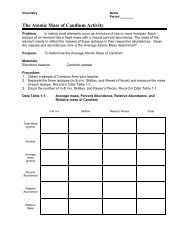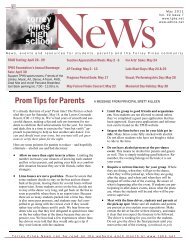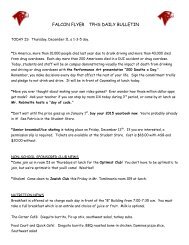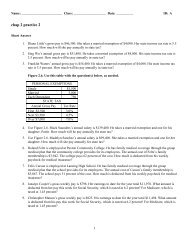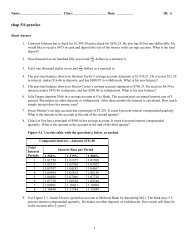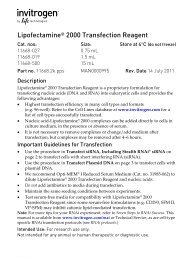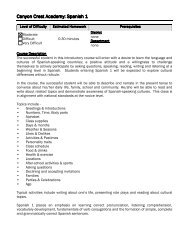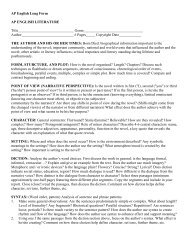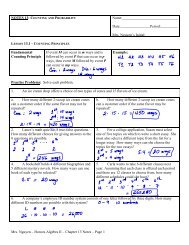TPHS Math Course Profiles - Teacher
TPHS Math Course Profiles - Teacher
TPHS Math Course Profiles - Teacher
Create successful ePaper yourself
Turn your PDF publications into a flip-book with our unique Google optimized e-Paper software.
Linear Algebra (SDSU <strong>Math</strong> 254 Introduction to Linear Algebra)Readiness Profile & <strong>Course</strong> ExpectationsStudents must have a “3” or higher on the Advanced Placement (AP) Calculus BC Exam or a“C” or higher in Calculus C. Students should take Calculus D before or concurrently with LinearAlgebra.Below are some guidelines for choosing the best course for an individual student. This is not aplacement test and it should not be used as the only criteria for making placement decisions.Credit is granted through San Diego State University and students must have successfullycompleted the equivalent of college-level Calculus I and II .Student BackgroundStudents entering Linear Algebra should already have a good understanding of the followingconcepts:• Systems of equations• Parametric equations (including lines and planes in space)• Vectors and operations with vectors• Solving problems in two, three, and four dimensions• Algebraic properties, axioms, and identitiesStudents entering Linear Algebra should also be able to solve problems such asVector Problem:For u = and v = findproj u v, the projection of v onto u.Parametric Equations and Systems Problem:Determine if the lines L 1 and L 2 are parallel,skew, or intersecting. If intersecting, find thepoint of intersection.L 1 : x = 5t− 7, y = −t+ 2, z = 6t−13L 2 : x = 3s+ 6, y = 2s+ 2, z = −2s− 3Plane Problem:Find the equation of the plane containing thepoints (1, 2, 3), (-2, 7, 0), and (5, -1, -1).Properties Problem:Name each property illustrated:(a) u + v = v + u (b) u + (-u) = 0(c) k(u + v) = ku + kv(d) If u = v and v = w, then u = w.Students entering Linear Algebra are expected to do the following things• Keep up with daily assignments without a daily check from the teacher.• Work independently and with classmates to solve problems and understand concepts.• Read mathematical arguments, proofs, and examples.• Prepare projects outside of class and give presentations in front of peers.• Solve complex problems without the use of a calculator or note sheet.• Develop proofs and write out mathematical arguments for solving problems.



